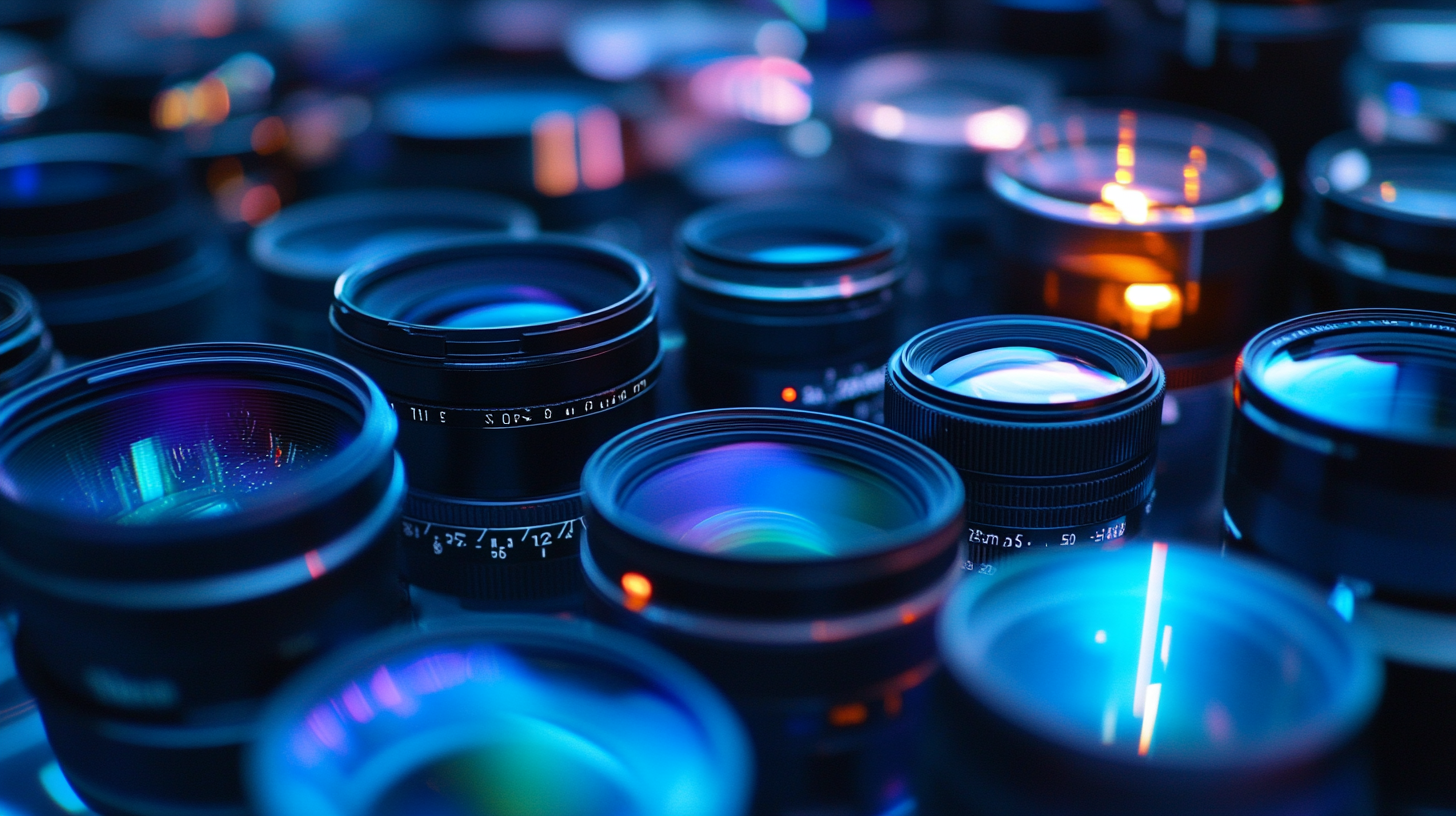In the rapidly evolving landscape of optical technology, selecting the right equipment is crucial for businesses aiming to optimize performance and image quality. According to recent market research conducted by Grand View Research, the global optical lens market is projected to reach $19.2 billion by 2025, with multi coated lenses becoming a significant driver of this growth. Multi coated lenses are designed to minimize glare and enhance light transmission, offering businesses superior image clarity and color fidelity. As such, understanding the diverse applications and benefits of multi coated lenses is essential in tailoring solutions that meet specific business needs. This comprehensive guide aims to provide insights into the critical factors to consider when selecting the best multi coated lens, ensuring that your investment delivers exceptional results in a competitive market.

When selecting multi coated lenses for your business, understanding their key features and benefits is crucial. Multi coated lenses are designed with multiple layers of anti-reflective coatings that significantly enhance light transmission, reduce glare, and provide superior image quality. According to a report by the Optical Society, multi coated lenses can increase light transmission by up to 99.5%, compared to single coated options which typically only allow for about 90% transmission. This improvement is particularly beneficial in professional settings where precision and clarity are paramount, such as in photography, medical imaging, and research environments.
 Furthermore, the durability of multi coated lenses sets them apart from their single coated counterparts. The coatings not only enhance performance but also provide scratch resistance and water repellence. Research from the International Journal of Applied Optics indicates that businesses utilizing multi coated lenses experience a 30% reduction in equipment maintenance costs over five years due to the increased durability and longer lifespan of the lenses. The investment in multi coated lenses can lead to significant long-term savings, making them a wise choice for businesses looking to enhance their optical solutions.
Furthermore, the durability of multi coated lenses sets them apart from their single coated counterparts. The coatings not only enhance performance but also provide scratch resistance and water repellence. Research from the International Journal of Applied Optics indicates that businesses utilizing multi coated lenses experience a 30% reduction in equipment maintenance costs over five years due to the increased durability and longer lifespan of the lenses. The investment in multi coated lenses can lead to significant long-term savings, making them a wise choice for businesses looking to enhance their optical solutions.
When selecting the right multi-coated lens for your business, the first step is to clearly identify your needs. Different industries require different lens characteristics; for instance, a photography studio may prioritize lenses that reduce glare and enhance color accuracy, while a manufacturing firm might need durable lenses that can withstand harsh environments. Assessing the specific requirements of your business will help you narrow down your options effectively.
Next, consider the types of multi-coated lenses available. Anti-reflective coatings can be crucial for applications involving high-contrast scenes or bright lighting, as they minimize reflections and improve visibility. Additionally, look for lenses that offer protection against scratches and environmental conditions, as these features can prolong the lifespan of your investment. By aligning the lens type with your operational demands, you'll ensure that your choice not only meets but exceeds your business expectations.
When evaluating optical options for your business, understanding the differences between single coated and multi coated lenses is crucial. Single coated lenses utilize a single layer of anti-reflective coating primarily to reduce glare and enhance light transmission. While they perform adequately in typical lighting conditions, their ability to minimize light loss during critical moments can be significantly improved. In contrast, multi coated lenses feature multiple layers of special coatings which not only enhance light transmission but also provide superior color fidelity and contrast. This makes multi coated lenses particularly beneficial in low-light situations where clarity and detail are paramount.
The comparative advantages of multi coated lenses become even clearer when considering specific applications, such as in binoculars or precision instruments. Multi coated designs often yield brighter images and better performance across a range of environmental conditions, from bright sunny days to gloomy overcast situations.
As the market for optical lenses continues to grow, understanding these fundamental differences will empower businesses to make informed decisions that cater to their specific operational requirements. Whether you're selecting lenses for outdoor adventures or precision tasks, choosing the right coating can greatly influence your visual experience.
When it comes to choosing multi coated lenses for your business, understanding lens quality and performance ratings is crucial. Evaluating these factors ensures you invest in products that meet specific operational needs. Start by checking the lens's transmission levels. High-quality multi coated lenses typically have a higher light transmission rate, which enhances image clarity and reduces color distortion. Look for lenses that offer anti-reflective coatings to minimize glare, especially if your application involves photography or videography.
In addition to transmission rates, pay attention to the durability of the lens coatings. Reliable manufacturers often provide information about scratch resistance and protection against environmental factors. Furthermore, consider the lens's warranty and any performance reviews from existing users.
Performance ratings can also be indicative of how well a lens performs in varied lighting conditions. By meticulously assessing these attributes, you can make an informed decision that not only enhances the visual quality of your work but also ensures longevity and reliability in your lens investment.
When selecting multi-coated lenses, understanding the balance between cost and value is crucial for any business. Today's market offers a variety of options, making it vital to assess what features align with your specific needs without exceeding your budget. Multi-coated lenses may initially appear more expensive, but their benefits—such as reduced glare, enhanced clarity, and increased durability—can lead to long-term savings and improved performance. Investing in high-quality lenses can mean fewer replacements and enhanced customer satisfaction, which ultimately contributes to better business outcomes.

Consider researching different suppliers and comparing the value propositions of their offerings. While some optical stores may have a reputation for low prices, evaluating the overall quality can be more beneficial in the long run. Look for products that have received positive feedback based on real-world use, as these often indicate the true worth of the investment. By carefully analyzing the cost versus value of multi-coated lenses, businesses can make informed choices that support both their financial goals and operational efficiency.

